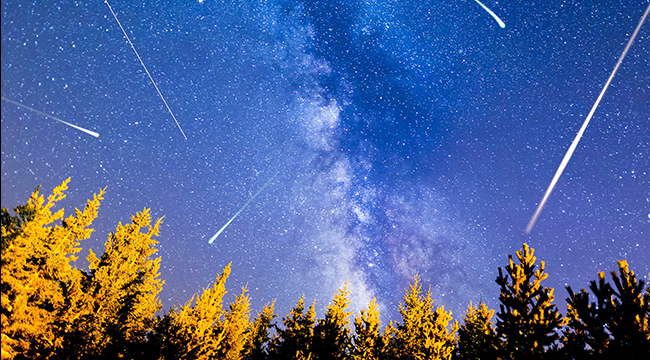
Tonight, the sky’s going to light up. The Geminid Meteor Shower will be at its most visible and brightest this evening, and if you’ve got a clear sky, some warm gear, and a little time, you can see some pretty amazing fireballs and lights.
Here’s what you’re seeing, and how to watch.
- What is the Geminid Meteor Shower? Short answer: An asteroid gets cooked and gives off dust. Okay, okay, it’s a bit more elaborate than that. The asteroid 3200 Phaethon is a named asteroid that gets closest to the Sun. As Phaethon gets closer to the Sun, it heats up. If you remember high school physics, you know heat makes molecules move, so Phaethon lets out a massive gasp of dust. When the Earth plows through the dust? Meteor shower. This is quite rare. Usually, meteor showers are caused by by-passing comets.
- Uh, is this dangerous? Nah. Remember, meteor showers are stuff burning up in the Earth’s atmosphere. The debris will be ash before it so much as gets near a flight path, forget the Earth’s surface. You’re not about to star in Deep Impact, no worries.
- Will everyone be able to see it? While the Geminids are more visible in the Northern Hemisphere, the Southern won’t miss out on the light show either. And yes, it’ll be visible across the globe. All you really need to do to spot them is to find the constellation Gemini in the sky; there are several apps that can help you do that, unless you’re an old-school navigator and can eyeball constellations.
- When should I watch? You might want to grab a nap, as the shower is expected to be at its most intense around 2am. But you’ll be able to see the streaks and fireballs from around then until about early morning, so if you want to set your alarm a little later, enjoy the rest.
- Anything else I should bring? Warm clothes and a sleeping bag, as it’s going to be fairly cold overnight up north. But you won’t need a telescope; the fireworks will be visible to the naked eye. Although if you’re on the water, consider bringing a bigger boat.






